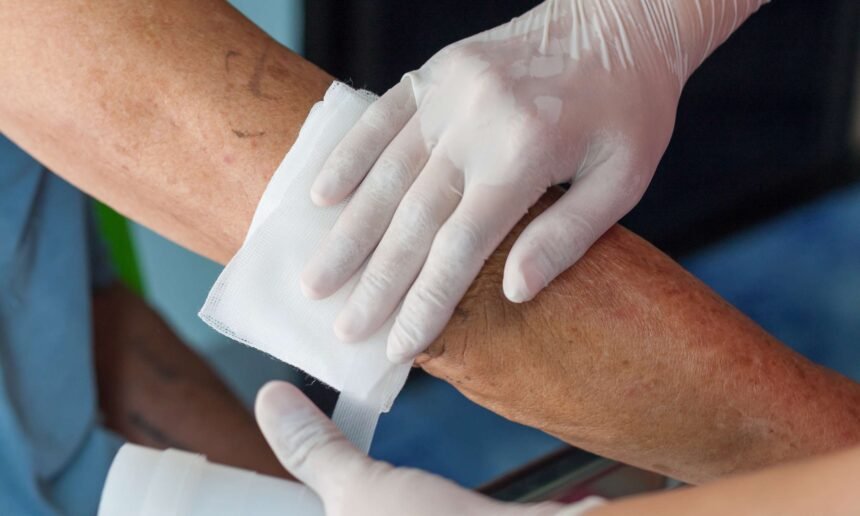Children are naturally active and curious, making them more prone to injuries. While most pediatric wounds are minor and heal quickly, some require special care to prevent infections and complications. Understanding the different types of pediatric wounds, their causes, and the best wound care treatments can help parents and caregivers manage injuries effectively.
Types of Pediatric Wounds
1. Abrasions (Scrapes and Grazes)
Abrasions occur when the top layer of skin is scraped off due to a fall or friction against a rough surface. These wounds are common among children playing outdoors.
Treatment:
- Clean the wound with mild soap and water.
- Apply an antibiotic ointment.
- Cover with a clean bandage to protect against infection.
2. Lacerations (Cuts)
Lacerations are deep cuts or tears in the skin, often caused by sharp objects like knives, glass, or metal.
Treatment:
- Apply pressure to stop bleeding.
- Rinse the wound with saline solution.
- If deep, seek medical attention for stitches or adhesive strips.
3. Puncture Wounds
These wounds result from sharp objects like nails, needles, or animal bites. They are more prone to infections as bacteria can get trapped inside.
Treatment:
- Clean the area thoroughly with antiseptic.
- Do not close the wound if deep, as it needs to drain.
- Check tetanus vaccination status and consult a doctor if needed.
4. Burns and Blisters
Burns in children can be caused by hot liquids, fire, or electrical sources. Blisters form as a protective response to burns or friction.
Treatment:
- Cool the burn with running water for 10–15 minutes.
- Avoid popping blisters to prevent infections.
- Apply a sterile dressing and seek medical attention for severe burns.
5. Surgical Wounds
After surgical procedures, children may have wounds that need proper care to heal correctly.
Treatment:
- Follow post-surgical care instructions from the doctor.
- Keep the wound clean and dry.
- Watch for signs of infection, such as redness, swelling, or pus.
For more details on treating pediatric chronic wounds, check out our detailed guide on Pediatric Chronic Wounds: Causes, Treatments, and Long-Term Care.
Common Causes of Pediatric Wounds
Understanding what causes wounds can help in preventing them. Some common causes include:
- Falls and playground injuries
- Sports and recreational activities
- Accidental cuts from sharp objects
- Animal bites and insect stings
- Burns from hot surfaces or liquids
- Surgical procedures
Best Practices for Pediatric Wound Care
1. Clean the Wound Immediately
Rinse the wound with clean water and mild soap to remove dirt and bacteria. Avoid using alcohol or hydrogen peroxide, as they can slow healing.
2. Use the Right Dressing
Choose an appropriate wound dressing based on the wound type:
- Hydrogel dressings for burns
- Foam dressings for moderate exudate wounds
- Silicone bandages for sensitive skin
- Antimicrobial dressings for infected wounds
3. Monitor for Signs of Infection
Signs of infection include:
- Increased redness and swelling
- Pus or yellowish discharge
- Persistent pain
- Fever or chills
If any of these symptoms appear, seek medical attention immediately.
4. Prevent Scarring
To reduce scarring, keep the wound moist with petroleum jelly or scar-reducing gels. Avoid excessive sun exposure, as UV rays can darken scars.
5. Keep Kids Comfortable and Engaged
Healing can take time, and children may feel uncomfortable with dressings. Use distraction techniques such as storytelling, toys, or games to help them stay patient.
If you’re looking for tips to speed up healing of minor wounds, you can find detailed advice in our Healing Faster: Tips for Managing Minor and Major Pediatric Wounds blog.
When to Seek Medical Attention
Some wounds require professional medical care. Visit a doctor if:
- The wound is deep and bleeding doesn’t stop after 10 minutes of pressure.
- The wound shows signs of infection.
- A puncture wound involves a rusty object or an animal bite.
- The child has not had a tetanus shot in the last five years.
Conclusion
Pediatric wounds are a common part of childhood, but proper care and prevention can ensure fast healing and reduce complications. By understanding different wound types, their causes, and effective treatment options, parents and caregivers can provide the best pediatric wound care to keep children safe and healthy.


Leave a Reply